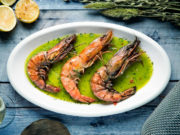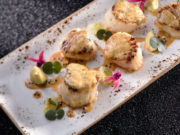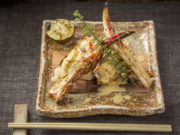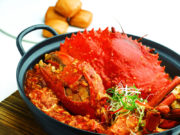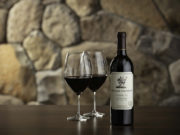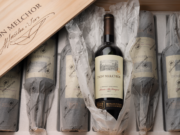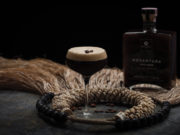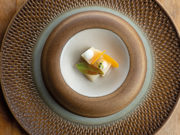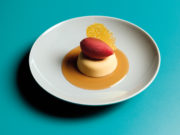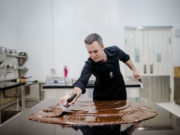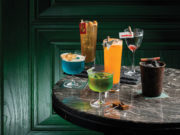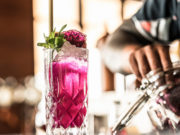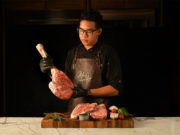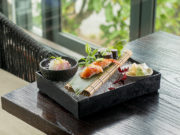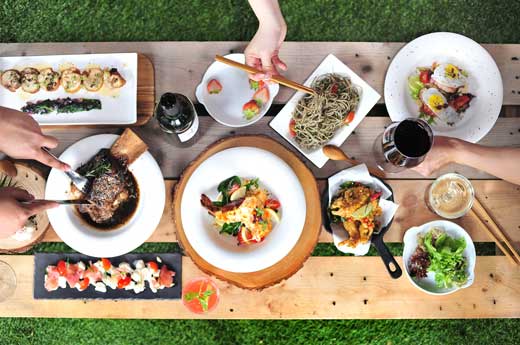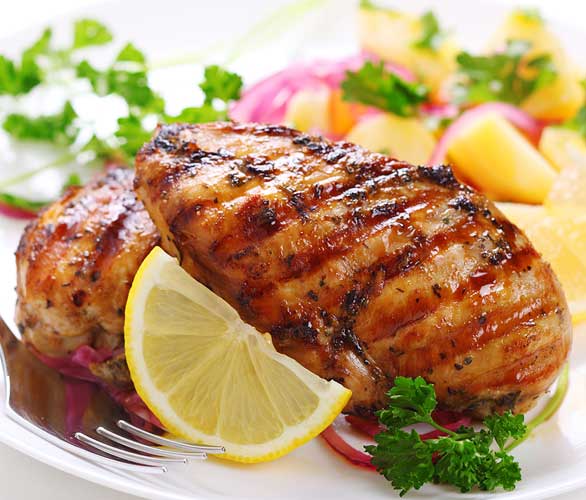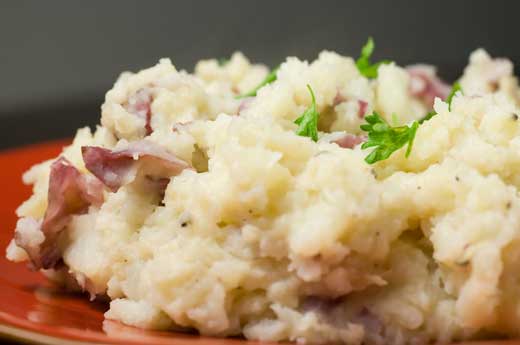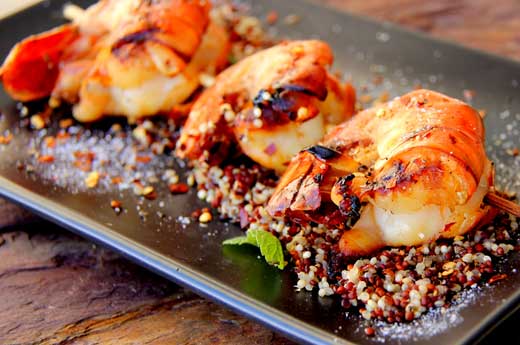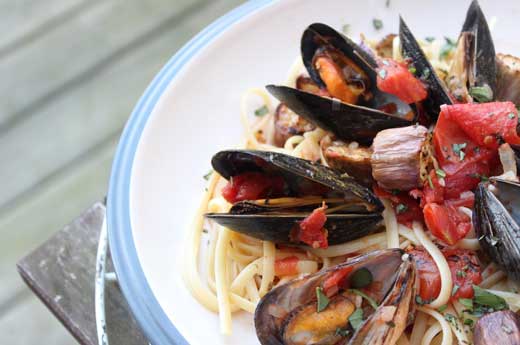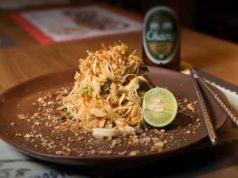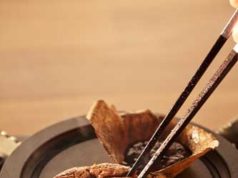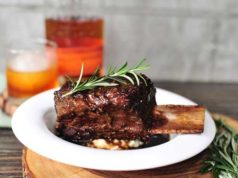Over the years, fusion has become a profanity among many food lovers and professionals in the industry, synonymous with mindless mixing of ingredients in the name of novelty rather than good taste. But now may be time to rehabilitate the term.
Quite a number of modern chefs and renowned food writers are now starting to agree that it’s a mistake to write off the blending of food culture as a modern atrocity. The previous article talks about how fusion has been happening for centuries—for as long as people have travelled. “You would take your comfort food, noodles perhaps, with you, and then use whatever you could find locally to make it taste of home,” Ching-He Huang, the star of BBC cooking show Chinese Food Made Easy, explained.
Fusion food has traditionally appeared where communities live close to each other: so the British colonialists adopted and adapted the Indian lentil and rice dish kicheri to make kedgeree; the Chinese sailors who married Malaysian wives developed the spicy Nonya cuisine of the Straits of Malacca; and, more recently, the Koreans of Los Angeles gave birth to the Korean/Mexican fusion that led to kimchi, Korean pickled cabbage, spicing up tacos doled out at “food trucks” (burger vans to us on this side of the pond) all over the city.
The fact of the matter is that there’s a difference between amateurs without finesse or patience trying to be authentic and professionals who actually put in countless hours of research and trial-and-error to get that perfectly harmonious balance. Without sounding too judgemental, the first group of people, sometimes unknowingly, gave the term fusion a bad name.
In reality, real fusion is not easy to pull off. The secret of true fusion food is to not mix too many flavours just for the sake of authenticity. We’ve seen a lot of people—both enthusiasts and professionals—successfully hit the sweet spot in fusion through careful research and meticulous control of taste. The following are some examples of modern fusion cuisines, three with bonus recipes that you can try out, which have a sense of balance between authenticity and delightful taste.
Honey-glazed spicy chicken
with wasabi roasted garlic mashed potato
Serves 4
The chicken
1/2 cup rice vinegar
5tbsp honey
1/3 cup soy sauce
1/4 cup Asian (toasted) sesame oil
3tbsp Asian chilli garlic sauce
3tbsp minced garlic
8 skinless, boneless chicken breasts
1tbsp chopped green onion
Salt to taste
1. Whisk vinegar, honey, soy sauce, toasted sesame oil, chilli garlic sauce, garlic and salt in a bowl until smooth. Pour half the marinade into a large plastic zipper bag, retaining the other half
2. Place the chicken breasts into the marinade bag, squeeze the air out and seal. Shake a few times to coat chicken, refrigerate for one hour, turning the bag once or twice in the meantime
3. Pre-heat oven to 220 degrees Celsius (425 degrees Fahrenheit)
4. Pour the other half of the marinade into a saucepan over medium heat, bring to boil, and cook for 3 to 5 minutes, stir often. Remove chicken from refrigerated bag, discard the marinade. Place the chicken breast into a 9×13 inch baking dish and brush with 1/3 of the thickened marinade from the saucepan.
5. Bake for 30 minutes, basting one more time after 10 minutes. Let stand for 5 or 10 minutes. Bring remaining marinade back to a boil for 2 minutes. Serve chicken with marinade, sprinkle with green onions.
Honey-glazed spicy chicken
with wasabi roasted garlic mashed potato
1 head garlic, whole
1tsp olive oil
2½ pounds waxy potatoes, quartered
4tsp wasabi powder
1/2 to 1tsp water
1 cup unsalted butter at room temperature
1/2 cup heavy cream, or more if needed
Salt and freshly cracked black pepper to taste
1. Preheat oven to 220 degrees Celsius. Trim off the top 1/2-inch of the garlic bulb with a sharp knife to expose some of the clove ends. Drizzle with olive oil, wrap loosely in aluminium foil, place on a small baking sheet. Roast until the bulb is soft and fragrant, 45 to 55 minutes. Squeeze the cloves from the skins and set aside in a small bowl until ready to use.
2. Place the potatoes in a large stockpot and cover with cold water. Bring to a boil over high heat and simmer until a fork inserted into a potato releases easily, about 20 minutes.
3. In a small glass bowl, mix the wasabi powder with 1/2 teaspoon of water to start, adding any additional water by drops until a thick paste is created. Cover with plastic wrap and set aside to bloom, at least 5 minutes.
4. Drain water from the potatoes and return the potatoes to the pot, allowing excess water to evaporate. In a small saucepan or in the microwave, warm the butter and heavy cream. Add the mixture to the potatoes, along with the wasabi and roasted garlic cloves, and mash until smooth and fluffy. Adjust seasoning with additional salt and pepper, if needed.
Mango and Chilli-Glazed
Grilled Prawn
2 pounds large prawns, de-veined, head removed, if necessary
1 large mango, peeled and cubed
3tbsp honey
2 cloves garlic, peeled and minced
2 sprigs mint
2tbsp chilli paste
2 limes juiced
1 lime zest
1tbsp ground ginger
1tsp coconut oil
1tsp crushed red pepper, or to taste
Coarse salt and ground black peppercorn to taste
1. Using pestle and mortar (or food processor), combine mango, garlic, mint and ginger. Thoroughly mix mango concoction with remaining ingredients in a large bowl
2. Place prawns in covered container or plastic bag, pour in and generously coat prawns with mango marinade. Leave 1/4 – 1/3 cup of marinade for basting during grilling process. Press air from container, refrigerate for two hours, stirring prawns every 20 – 30 minutes
3. Pull prawns out of the refrigerator, pre-heat grill to hot. With shell still intact, skewer 3 – 4 prawns at a time and place over grill grates
4. Grill for three minutes per side, brush generously with remaining marinade as the prawns cook
5. Remove prawns from the grill when shells looks pink and cooked through
6. Apply final glazing with mango marinade. Put on plate and serve hot.
Asian-infused mussels
with linguine
2 pounds fresh mussels
1 shallot, finely chopped
3 to 4 cloves garlic, minced
3/4 cup dry white wine
2 Chinese eggplants (approximately 2 cups prepped)
14.5 ounce diced tomatoes
1 Thai chilli, sliced lengthwise
1tbsp butter
2tbsp olive oil
¼ cup fresh Thai basil leaves, chopped
Salt and pepper to taste
Cooked spaghetti or linguine
1. Rinse and clean mussels. Pre-heat oven to 220 degrees Celsius.
2. Cut eggplants into 1-inch cubes or rounds depending on thickness. Lay eggplant out on a baking sheet. Drizzle 1 tablespoon of olive oil over the eggplant and sprinkle with salt and pepper. Toss eggplants together so that all the pieces are lightly coated with the olive oil and seasonings.
3. Bake eggplants for 10 minutes. Remove from oven. With a heat resistant spoon or spatula, give the eggplant cubes a toss to help them cook evenly. Return to oven and bake another 10-15 minutes, or until the eggplant is tender and caramelized. Remove from oven and set aside. While eggplant is baking, begin preparing the mussels.
4. In a large lidded pot, or Dutch oven, heat the remaining olive oil and butter over medium, to medium-high heat.
5. When butter has melted, sauté shallots until soft and translucent, then add the minced garlic.
6.Pour wine into the pot and add the Thai chilli pepper and bring to a boil. Add diced tomatoes along with the juices.
7. Return to boil. Lower heat to medium. Cover and simmer 2 to 3 minutes. Add mussels to the pot in a single layer along with half of the Thai basil. Cover and steam the mussels for 3 minutes. After 3 minutes, check to see if mussels have begun to open. Most open within 3-4 minutes.
8. Once most of the mussels have opened, use a slotted spoon to remove mussels from the juices they were steamed in and place in a large bowl. Discard mussels that remain closed.
9. To serve, spoon tomatoes and juices over the cooked pasta along with the baked eggplant cubes. Toss together. Add mussels. Spoon additional juices as desired over the mussels, and sprinkle with remaining chopped Thai basil.







